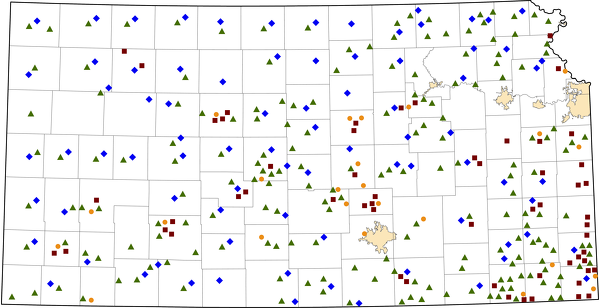Kansas
State Office of Rural Health
Kansas Office of Primary Care & Rural Health
Email: kdhe.ruralhealth@ks.gov
view details
Kansas Nonmetro Population
Kansas Rural Healthcare Facilities
Selected Social Determinants of Health for Rural Kansas
8.7% of Kansas residents lack health insurance (Kaiser, 2022). According to the USDA Economic Research Service, the average per capita income for Kansans in 2021 was $58,924, with the rural per capita income at $51,545. The ERS reports, based on 2021 ACS data, that the poverty rate in rural Kansas is 13.0%, compared with 11.1% in urban areas of the state. 10.4% of the rural population has not completed high school, while 7.5% of the urban population lacks a high school diploma according to 2017-2021 ACS data reported by ERS. The unemployment rate in rural Kansas is at 2.5%, and in urban Kansas it is at 2.7% (USDA-ERS, 2022).
Data Sources
Kaiser Family
Foundation State Health Facts;
USDA Economic Research Service: State Fact Sheets
Contacts
There are more organizations related to Kansas in the organizations section.
Last Reviewed: 9/18/2023


